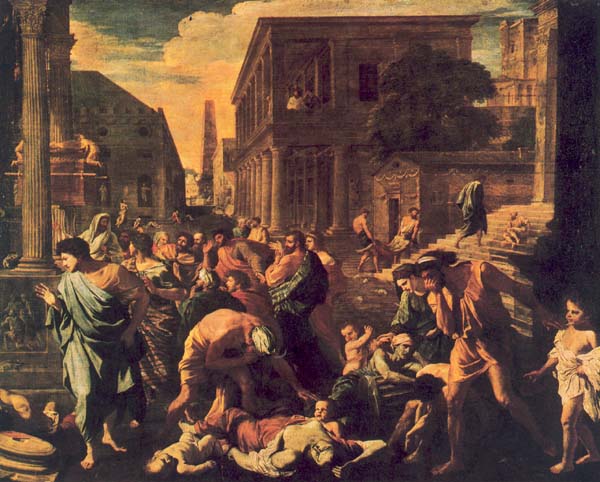Image Details

The Louvre, Giraudon/Art Resource
Although the style of dress and architecture may not be authentic, Poussin follows the narrative account in 1 Samuel 5 precisely. On the left of the painting, the wooden Ark of the Covenant, bedecked with golden angels, is shown in the Philistine Temple of Dagon. In front of the Ark, the statue of the Philistine god Dagon lies broken, its head and a hand on the floor below. “When the Philistines captured the Ark of God, they brought it … to Ashdod … and brought it into the Temple of Dagon and they set it up beside Dagon … but early the next morning, Dagon was again lying prone on the ground in front of the Ark of the Lord. The head and both hands of Dagon were cut off, lying on the threshold; only Dagon’s trunk was left intact.” Poussin even indicates the time of day by the long shadows and dim light.
The scene both portrays and evokes strong emotion, as the ashen plague victims are carried away. In the foreground, a man covers his nose and mouth with one hand as he stoops to pull a child away from its dead mother’s breast. “So they moved the Ark of the God of Israel [to Gath]. And after they had moved it, the hand of the Lord came against the city, causing great panic; He struck the people of the city, young and old.”
